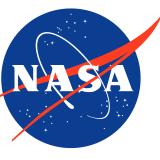Quantifying the Relative Importance of Multiple Drought Indicators in the U.S. Drought Monitor as a Function of Location and Time of Year

The goal of this project is to determine the roles of multiple physical indicators in replicating the drought conditions in the U.S. Drought Monitor (USDM) and quantify the information explained by each indicator as a function of location and season. In order to meet this goal, there are four main objectives of this study:
- Database Development: This database will contain an archive of potential indicators of drought, as well as a geospatial database of the USDM weekly drought maps. The drought indicators include (but are not limited to) precipitation, Standardized Precipitation Evapotranspiration Index (SPEI), Evaporative Drought Demand Index (EDDI), VegDRI, NLDAS-2 soil moisture, GRACE-based groundwater and root zone soil moisture, snow products, and remotely-sensed soil moisture.
- Statistical Analysis: This objective will utilize the above database and statistical methods to quantify the relative importance of each indicator for USDM drought intensity by location and time of year. The statistical techniques that are being used for this analysis include mutual information (i.e., a measure of the mutual dependence between two random variables—in this case a single drought indicator or a multivariate set of such indicators, and the USDM weekly map) and a form of machine learning known as deep learning. The machine learning technique being used is random forest.
- Verification: In order to verify, this project will use the full and reduced sets of indicators to quantify the uncertainty in representing the USDM maps. For the reduced sets, this might mean quantifying the uncertainty using only the top ~5 indicators for a particular region or season.
- Dissemination: To develop a plan for disseminating results, this project will include working with the Drought.gov team to develop prototypes for how to present this locally-specific information on Drought.gov (e.g., graphics, dashboard).
Knowledge from this project could eventually lead to customized objective blends for monitoring, or more optimized and accurate drought early warning systems by knowing the most appropriate indicators to use by location and time of year. If local stakeholders can have information about which drought indicators are most critical for monitoring and predicting evolving droughts in their regions, then they can better prepare for and mitigate existing droughts.
Research Snapshot
What to expect from this research
The researchers plan to work with the NIDIS Drought.gov team to widely distribute this information, in addition to sharing outcomes through peer-reviewed publications:
- Yatheendradas, S., D. M. Mocko, C. Peters-Lidard, and S. Kumar. 2023. "Quantifying the Importance of Selected Drought Indicators for the United States Drought Monitor." Journal of Hydrometerology 24(9), 1457–1478.

